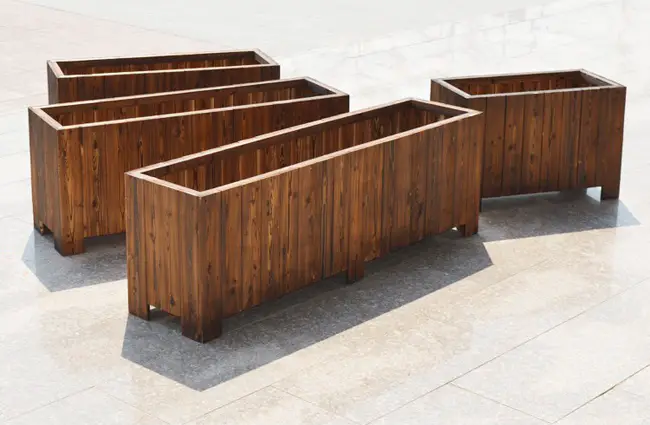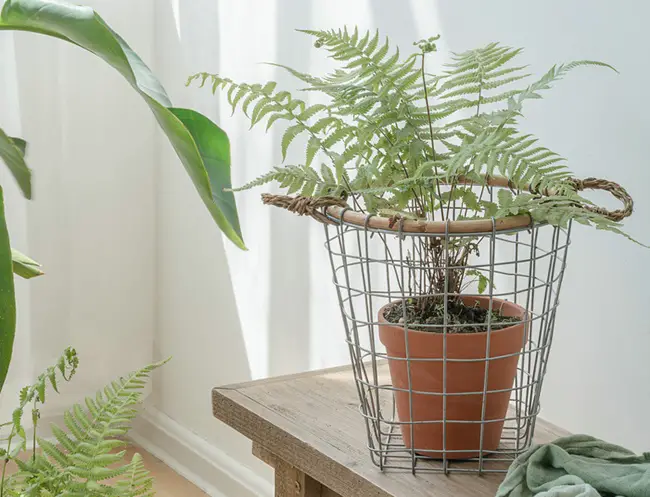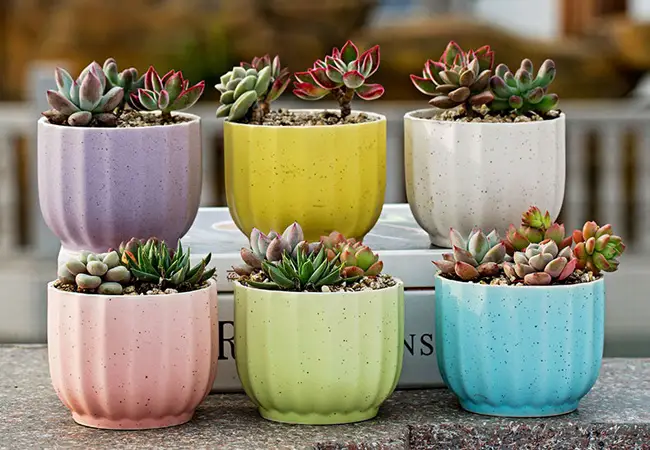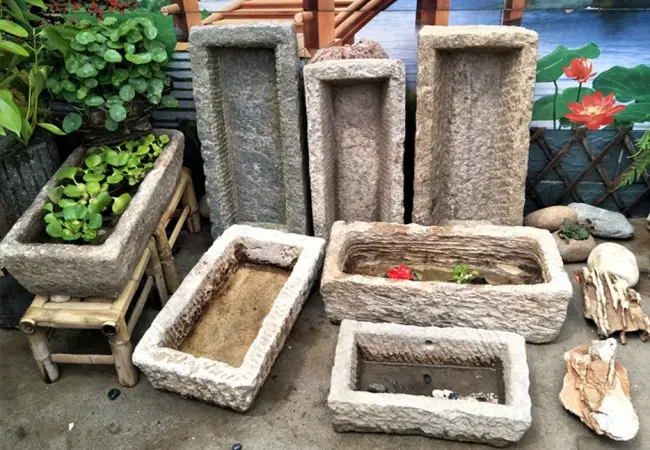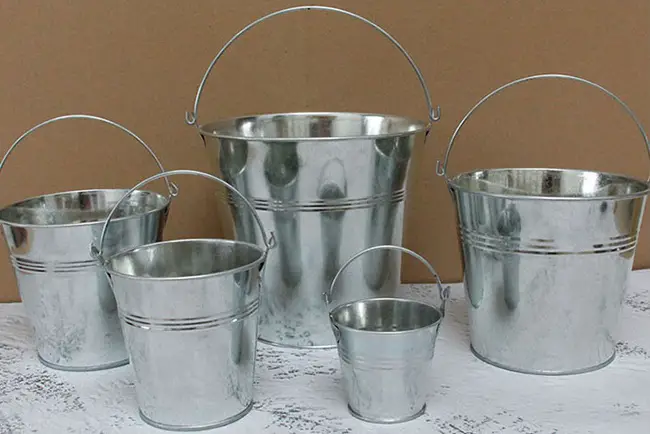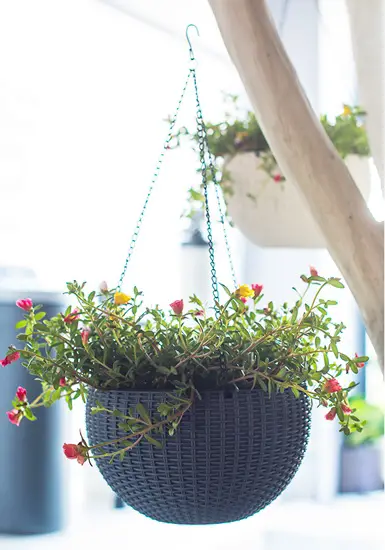Container gardens are a practical way to grow vegetables, flowers, plants, and even trees when space is at a premium. For those who don’t have yards and yet would like green plants or flowers, patio and roof gardens are necessary.
In addition, they are incredibly easy to maintain. When it comes to designing your container garden, you may take any number of different approaches and employ a variety of different types of containers for your planting needs.
Before starting your container garden, you need to know about the numerous types and styles of pots and containers available to display your flowers, herbs, and plants. Why? Because containers or pots range from metal to wood to ceramic in content, and just about everything in between.
The fun thing about container gardening is that one can choose just about any type of container or pot to plant in. It’s up to the individual gardener, who is only limited by imagination and creativity.
Do you have to use a traditional garden pot?
No. Container gardens are grown in troughs and other unique containers and objects, including tires, wheelbarrows, and packing crates, to name a few. The right choice of container for your garden will depend on several key factors:
- Intended location of your plants
- Your budget
- The design of your patio or container garden
Pots and containers made of plastic, fiberglass, stone, wood, ceramics, and metal are common and popular. In addition, new designs and materials often make it difficult to tell the difference between a fiberglass and plastic pot from a terra cotta container, so you can choose classic and elegant without having to break your budget.
As you design and grow your container garden, however, be aware that any materials used to create your pot will offer both advantages and disadvantages. Cost, weather, and weight are all important concerns when choosing an appropriate container.
For example, pots and containers made of wood are lightweight and generally cheaper than those made of stone and cement. Many types of containers are sun-proof and winter-proof, while others aren’t.
Before designing your garden, consider intended locations and placement of pots during various growing seasons, as well as their exposure to wind, sun, rain, and snow, and changes in temperature and humidity.
Wooden Boxes as Planting Containers
Wooden boxes allow gardeners the chance to show off a garden to its greatest potential. Whether you build your own wooden box, use that old packing crate or purchase one from your garden center, there is no limit to the different styles, sizes, and shapes you can find.
Old-fashioned toolboxes make beautiful containers, as do shipping crates. Recycle that old bookshelf or convert that old wooden box into a planter that will draw attention and provide a nice home for any garden arrangement.
Different wood types are found in wooden boxes, from pine to birch to oak and hickory and cedar. Cedar and redwood are the best choices for outdoor containers, as they are highly weather resistant. However, pine, birch, and hardwoods like oak and hickory can be just as suitable.
Treated and painted wood is your best bet if you choose a wooden box for your plants or flowers. As with most woods, exposure to rain, snow, and heat will initiate some aging, warping, and on occasion, dry rot or damaged wood. Before planting in such containers, apply a coat or two of wood sealer or wood preservative to help lengthen the life and durability of your choice.
Large or small wooden boxes provide a suitable container for most types of plants and flowers. Wooden boxes can be designed to hang from a windowsill or decorate patio steps. Attaching a trellis to a wooden box will provide an attractive privacy fence. Wooden tubs and barrels in various sizes allow the container gardener an unlimited number of ideas for placement and can be moved with relative ease. Always remember to drill drainage holes in the bottom of any wooden container.
Advantages:
Wooden boxes can be found just about anywhere you look, from your local produce market to the tool shed outback. Many companies use wooden shipping crates for their products, and a few quick phone calls can usually track down many possibilities. Inexpensive and easy to move, wooden boxes can be treated, stained, painted, or carved for just the right look you want for your garden.
Disadvantages:
Wooden boxes are not impervious to weather and will eventually warp or experience some damage if not treated properly and waterproofed.
Wire Baskets as Planting Containers
Whether hanging or not, Wire baskets are very lightweight and can be adapted to just about any need. Still, wire baskets can also grow very heavy when damp, so it is essential to adequately attach to walls, windows, posts, or siding.
A wire basket will require a lining to hold potting soil and plant roots in place. The best choice for such lining is sphagnum moss or a ready-made liner purchased at your local garden center that will easily slide into the basket. Make sure that soils will not leak through the lining before you plant anything!
Advantages:
Wire baskets are very inexpensive and are generally designed to hang from walls and posts. Usually shaped in a half-circle or cone design, they are sturdy, weatherproof, and provide an attractive container for flowers, herbs, and small plants.
Disadvantages:
A wire basket will require the use of moss or other types of husk liner to prevent seepage and to keep roots from extending beyond container boundaries. Such liners can be messy and leak water and soil if not carefully inserted.
It is always best to use a piece of plastic to ensure that potting soil and roots don’t make their way through moss or o. For the last few weeks, I have run several posts on this blog. I am interested in getting back comments on what you would like to hear about from me with all types of gardening.
Painted Clay Pots
Ceramic containers are also made from clay, but they are fired at a higher temperature than terra cotta, which gives them the benefit of being waterproof and, in most cases, weatherproof as well. They’ll last longer than terra cotta due to the different materials used to create them, in combination with the firing process.
Advantages:
Ceramic containers are well insulated and will protect roots from the heat in summer. As with terra cotta, painted clay pots offer an upbeat mix of shapes, sizes, and styles. They come glazed or painted in a variety of colors and designs sure to please any container gardener.
Disadvantages:
Ceramic pots are more expensive than terra cotta. Painted clay pots are fragile, and if they tip over, they will break. It’s important to place such pots in a protected area, out of high winds and situations that may risk breakage.
Stone Troughs
A stone trough is defined as an indentation or hollow worn into the surface of the stone. They can be as big as a horse trough or the size of a breadbasket, or anywhere in between. These planters can be made of stone or cement and are quite heavy, making them more suitable for permanent locations.
Faux stone or cement troughs for use on balconies or outside decks provide dramatic impact, though they will not be nearly as heavy as real stone or cement with the added weight of soils.
Such troughs make an ideal potting container for many different types of flower and plant arrangements, and depending on size, can provide not only an attractive accent to your garden but may make up an entire garden in and of itself!
Stone and cement are naturally porous. If you happen to find such a stone or trough on your property that you want to use as a container, then you will need to “cure” it first or coat the inside with latex paint to provide a water-retaining seal, using a neutral color that will not be noticeable upon closer inspection.
In addition, if your trough is not store-bought, you will need to drill a few drainage holes through it, which can be done fairly easily using an electric drill fitted with a stone or cement drill bit. Before placing soil in your trough, cover the drainage holes with screening material to keep things neat.
Last but not least, if your stone trough is made of cement, “neutralize” it before planting by soaking it in a mixture of 4 parts water to 1 part swimming pool (muriatic) acid. This will prevent the natural ingredients from the cement from leeching into the root system of your plants.
To make life easier, situate the stone trough in its desired location before filling it with soil. Many experienced container gardeners grow lichen or moss inside a stone trough by painting it with yogurt or buttermilk after curing it. This allows algae and moss to grow, adding additional depth to your arrangement and providing additional nutrients to plant roots.
Advantages:
A stone trough offers a solid, antique look and is suitable for permanent plants and arrangements.
Disadvantages:
Stone troughs are heavy and difficult to move. In addition, because of their coloring, they may appear bland.
Galvanized Tin Containers
Using galvanized tin containers in your garden provides an opportunity for gardeners to really get creative. Whether you use an old milk bucket or milk container, or a washtub or watering can be galvanized, tin possibilities are endless.
Since galvanized tin doesn’t rust, it’s a perfect choice for container gardens on your patio, deck, or yard that will be exposed to rainy or wet weather. Metal and galvanized tin containers are available in a huge variety of different styles, sizes, and shapes.
Many tin containers sold at your local garden or hardware store are more than adequate for plants and are usually coated with special paints to weatherproof them, but always ask before you buy.
Advantages:
Metal containers are relatively inexpensive, lightweight, and easy to move around. They are attractive in areas where a more modern look is desired and will hold just about any plant in an attractive arrangement.
Disadvantages:
Metal conducts heat and cold. If you intend to use galvanized tin or metal containers, it’s a good idea to line the pot with plastic sheeting or bubble wrap, or some other type of insulation that will protect plant roots from weather extremes.
Hanging Baskets
One of the most popular containers for any garden, a hanging basket adds loads of fun to any garden. They can grace a patio, an entryway, or an outside deck, adding splashes of color or zest to any arrangement.
You can hang hanging baskets from ceiling beams, support posts, or eaves. They can be made of wire, wood, or ceramic and can be fancy or plain. You can fill them with flowers, herbs, vines, or a combination of all three to add eye-pleasing arrangements when space is extremely limited.
Advantages:
Depending on size, a hanging basket can hold many specimens and are a perfect choice for seasonal plantings. Moving them is usually no problem, though they can be heavy. Extremely easy to hang and move around as desired, hanging baskets provide endless opportunities when floor space is minimal.
Disadvantages:
Any type or size of wire basket needs to be securely anchored to posts, beams, or walls. Watering them may prove awkward if you don’t have an adequate length hose or hang them too high to reach with a watering can easily. In addition, make sure they are not going to be bumped or jostled by shoulders and heads!
Also read:
- Elegant Looking Suncast Deck Box
- Reusable Root Pouch Grow Bags

